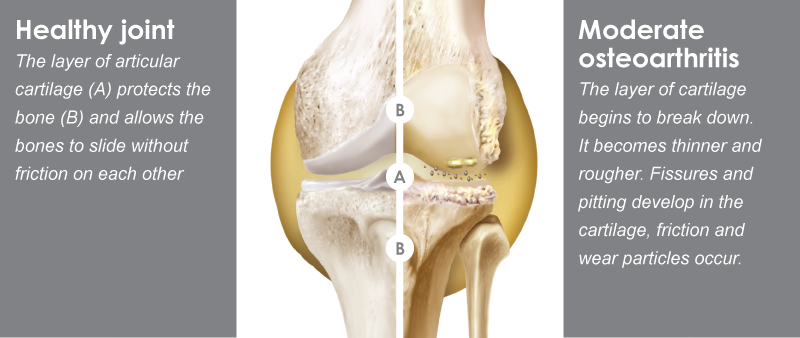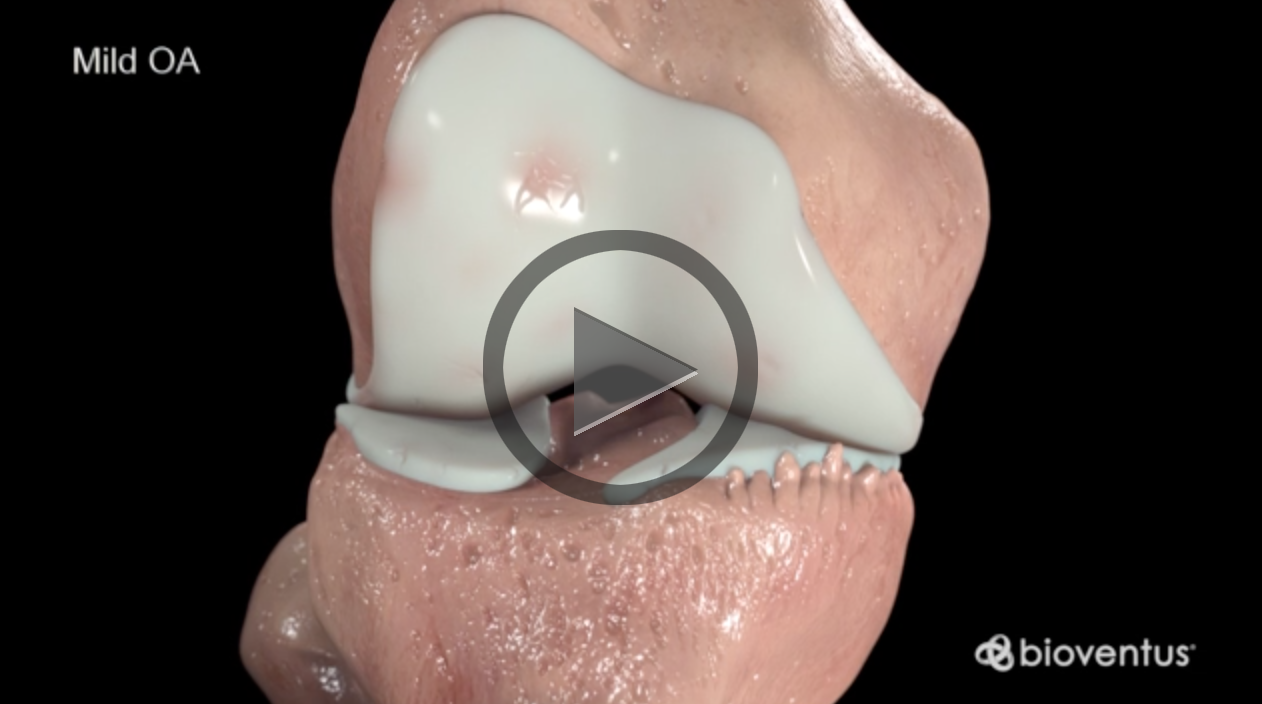What is osteoarthritis
When you have osteoarthritis, the hyaluronic acid (HA), a natural substance found in your joints and in the synovial fluid that fills your joints, becomes diluted and breaks down faster.1 This is associated with increased inflammatory processes that can degrade the cartilage in, for example, your knee.1 This inflammation causes pain receptors to begin firing during normal movement.1 The pain tends to cause knee osteoarthritis patients to limit movement which, in turn, limits to further deterioration of joint structures and synovial fluid quality because movement is required for normal synovial activity.
Cartilage is inside the joint and provides shock absorption whenever you walk, run, lift, climb stairs, or perform any other “impact” activity. Cartilage has no blood vessels and does not regenerate naturally. This is why damaged cartilage is very hard to restore or repair.2
Joints affected by osteoarthritis ache and become stiff, limiting you in your daily activities and mobility. Symptoms can vary in severity from person to person, from day to day and between affected joints. This increases the impact the condition has on your daily life, as there is no way to know when you will experience pain. Osteoarthritis can occur in almost any joint, but most commonly hip and knee joints are affected. Other joints that can become damaged by osteoarthritis are fingers, wrists, ankles, shoulder, elbow, big toes, neck and lower back.
Read more about causes of osteoarthritis, some osteoarthritis symptoms & restrictions and how to take control of your osteoarthritis condition.
To learn more about the different stages of knee osteoarthritis, click on the below illustration to watch the video.

